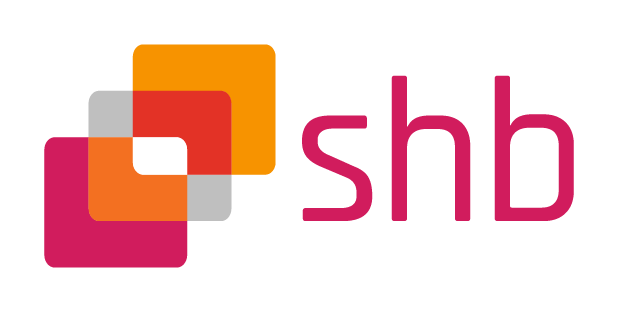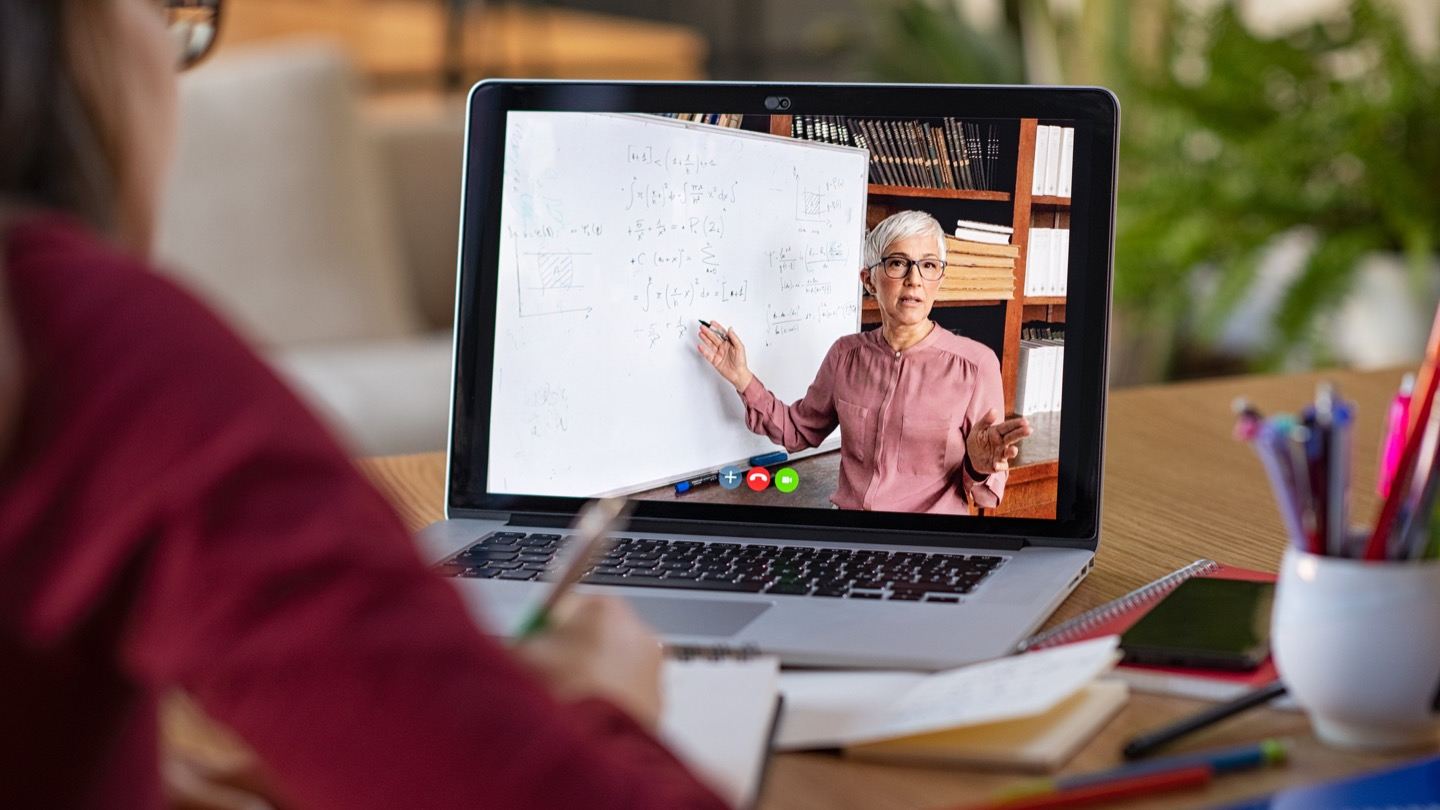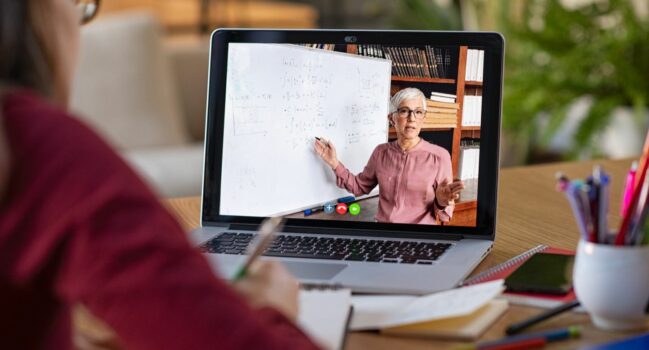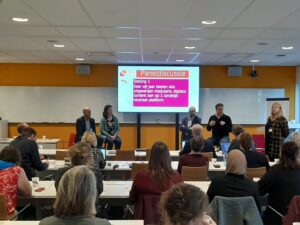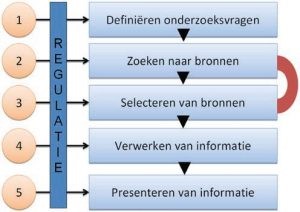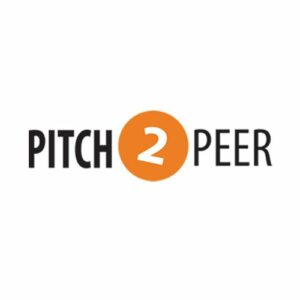Didactics
 Didactics is the art of teaching. It is about using techniques to teach students something. These techniques can take different forms, such as the use of activating methods, the principle of collaborative learning, methods for designing lessons, tips and tricks, and so on. There is no standard didactic recipe for the domain of information literacy. However, there are a few teaching and learning principles that give pointers when designing teaching methods for this important subject.
Didactics is the art of teaching. It is about using techniques to teach students something. These techniques can take different forms, such as the use of activating methods, the principle of collaborative learning, methods for designing lessons, tips and tricks, and so on. There is no standard didactic recipe for the domain of information literacy. However, there are a few teaching and learning principles that give pointers when designing teaching methods for this important subject.
Principle 1: Constructive alignment
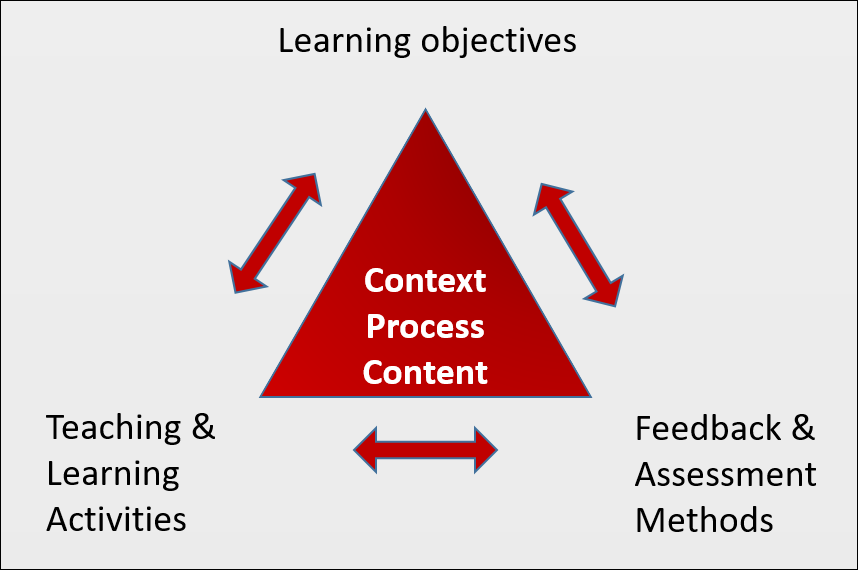 Biggs (2011) assumes that each educational design consists of three aligned domains: intended learning outcomes, teaching and learning activities, and assessment. He places these three domains in the constructive alignment model, the starting point always being the intended learning outcomes.
Biggs (2011) assumes that each educational design consists of three aligned domains: intended learning outcomes, teaching and learning activities, and assessment. He places these three domains in the constructive alignment model, the starting point always being the intended learning outcomes.
Intended learning outcomes
It is important to formulate sound learning outcomes when designing teaching. What exactly do you want the students to learn and to what level should they have a command of this knowledge? Is it mostly about gaining knowledge or acquiring specific skills? Learning objectives are not just key in determining teaching methods and content, but also for assessment purposes. And with information literacy in particular, it is important to explicitly include this in a programme’s or course’s intended learning outcomes.
Teaching and learning activities
The learning activities are those needed to achieve the intended learning outcomes. This is what your course’s programme is based on. What should students themselves do to achieve the outcomes and how do you help them to do so? You also investigate what literature is needed to support the learning activities.
Assessment
When designing an examination, it is important to ask yourself what would convince you that a student has mastered the material and/or skills. It is still too often the case that information literacy is not covered, or covered separately, as a result of which there is no effective constructive alignment.
Designing teaching
According to the constructive alignment principle, the design and development of teaching runs in a particular sequence. You first draw up the intended learning outcomes, then design the means for assessment, work out what learning activities are needed in order to reach the intended learning outcome, before finally designing the teaching materials and activities.
Principle 2: Contextual learning
 At different institutes, especially at those of higher education, students are given separate lessons in information literacy. These lessons are usually given by an information specialist. In itself, this is a good start, although there is little point in simply teaching information literacy ‘separately’. Separate ‘selecting sources’ or ‘searching in academic databases’ lessons do not really take hold. Information literacy can be regarded as a complex skill that is not generic by nature. In other words, the skill cannot be carried out without content from another field. After all, looking for information involves looking for information about a particular subject. It is therefore important to offer the skills within a certain context.
At different institutes, especially at those of higher education, students are given separate lessons in information literacy. These lessons are usually given by an information specialist. In itself, this is a good start, although there is little point in simply teaching information literacy ‘separately’. Separate ‘selecting sources’ or ‘searching in academic databases’ lessons do not really take hold. Information literacy can be regarded as a complex skill that is not generic by nature. In other words, the skill cannot be carried out without content from another field. After all, looking for information involves looking for information about a particular subject. It is therefore important to offer the skills within a certain context.
According to the contextual learning theory, learning only happens when students process new information or knowledge in a way that is meaningful to them in the context of their own reference frameworks. People naturally look for meaning in context by looking for relationships that appear logical and useful.
Teachers select or design learning environments in which learning has meaning. It is in such environments that students discover links between abstract ideas and practical applications in the context of the real world; concepts are internalised by the process of discovering, reinforcing, and relating. With regard to information literacy, it is therefore essential that it be learned in the context of a programme or course, linked to the domain-specific knowledge of that programme or course. It is only in this way that it will come to life for students.
To help you develop information literacy assignments that are contextual, you can use the questions below.
- Are new concepts presented in authentic assignments that students can recognise?
- Are concepts in examples or exercises presented in the context of their usefulness to the students?
- Do examples and exercises for students contain many real and credible situations?
- Do the assignments prompt students to feel, “I need to learn this!”?
- Do activities encourage the students to apply concepts and information in practical contexts?
Principle 3: Assisting with learning tasks
 Helping students to acquire information skills as part of a task can be done at various levels. If it concerns a learning path through the whole curriculum, the various tasks and support can be viewed from a long-term perspective. Support can be given in the form of showing how certain steps are taken or by demonstrating what they entail. This way, questions are already specified and search terms given. Sources can be offered, or the outline for a writing assignment can be partly set out.
Helping students to acquire information skills as part of a task can be done at various levels. If it concerns a learning path through the whole curriculum, the various tasks and support can be viewed from a long-term perspective. Support can be given in the form of showing how certain steps are taken or by demonstrating what they entail. This way, questions are already specified and search terms given. Sources can be offered, or the outline for a writing assignment can be partly set out.
It is also possible for a teacher to show part of the process as a model. During the first part of the lesson, the teacher carries out the first steps and shows the students what the result is. The students then continue working from where the teacher indicates that they should, after he/she has selected the most important sources, for example. Showing how something is done is valuable because the students can follow the teacher’s thinking and therefore gain a good understanding of the process.
Learning outcomes are an important starting point when creating and designing teaching. In accordance with the constructive alignment principle, they should be firmly compatible with the teaching activities and assessments; see the Didactics chapter on this site.
Well-formulated learning outcomes are specific, attractive, understandable, appropriate, feasible, and quantifiable (Butcher, Davies & Highton, 2006). A possible format is, ‘After successfully completing this subject, the student will be deemed capable of...’ + verb + subject + context. For example: ‘After successfully completing the Information Literacy module, the student will be deemed capable of conducting literature research for his or her Bachelor’s thesis.’
Various frameworks for information literacy are explained under the IL frameworks/models heading on this site. To move to instruction from these frameworks, learning outcomes may be based on various fields of competence from one or more frameworks. Once the learning outcomes have been determined, different levels can be identified within them. The result can be shown in a diagram: a matrix in which one or more outcomes is described for each field of competence at one or more levels (see Figure 1).
| Field of competence | Learning outcome | Level 1 | Level 2 | Level 3 |
| A | A1 | |||
| A2 | ||||
| B | B1 | |||
| B2 | ||||
| B3 | ||||
| Etc. | Etc. |
Figure 1: Sample format for a diagram (or matrix) with learning outcomes
As well as being a starting point for designing teaching, a diagram of learning outcomes is also a useful means of communication for fellow professionals, other teachers, and students. It helps mark out learning pathways and facilitates communication, which contributes towards more effective study. Edubadges, digital testimonials for knowledge or skills, can also be awarded to those who have attained one or more learning outcomes or levels.
The WUR and Amsterdam University of Applied Sciences (AUAS) libraries have developed such a scheme for information literacy teaching.
Examples of diagrams for learning outcomes:
- Information Literacy learning outcomes matrix - Wageningen University & Research - Library
- Generieke matrix leeruitkomsten Informatievaardigheid - Amsterdam University of Applied Sciences Library [currently being amended]
Source:
Butcher, C., Davies, C., & Highton, M. (2006). Designing Learning. From module outline to effective teaching. Londen: Routledge
For the purpose of designing teaching in which both subject matter and the acquisition of information literacy are key, it can be helpful to use several different teaching methods. The teaching methods encourage a systematic approach to tackling problems (cognitive strategy) and the development of mental models relating to information literacy.
Step-by-step approach
When acquiring complex skills such as information literacy, it is important to have a systematic approach. The following five steps, based on the Van Merriënboer and Kirschner model (see figure) are used:
- clarifying the search questions;
- looking for sources;
- evaluating and selecting sources and information;
- studying the information found;
- presenting the information.
The carrying out of these steps is governed by a number of questions. For the ‘evaluating and selecting information’ step, such questions include: How useful is the information in the light of the questions being asked? How reliable is the information? Or, more specifically: Who is the author? Which organisation is behind this site? Is it a primary source? And if it concerns academic sources: What is the impact of the journal that contains the article? Plus: How often is the publication referred to?
Process worksheets
Process worksheets are worksheets that state what steps must be taken; they also give guidelines for each step. The worksheets are designed to support the systematic approach towards tackling problems. When carrying out tasks, students are asked to fully satisfy the questions that relate to the various steps. At the start, the worksheets may be detailed and give extensive descriptions of each of the steps. The level of assistance can gradually be reduced by omitting the detailed support questions and only showing the main questions that relate to the steps. It is important that students look back at how they carried out the various steps and why their efforts were, or were not, successful.
Peer feedback
Another method that can help promote the conscious application of information literacy is the inclusion of peer feedback. Letting students reflect on each other’s work and working methods gives them an understanding of possible approaches and allows them to learn from each other; they can also jointly discuss how best to carry out a particular task. When giving peer feedback, it is important that students are provided with appropriate criteria and a feedback form.
(Inter) active information skills using Pitch2Peer in the master's phase
Information literacy, critical reflection and independence play an important role in the (master) course Strategic Change at the Nijmegen School of Management at Radboud University. Throughout the course, the students keep a kind of search log (search tracker) of their searches and, via the Pitch2Peer program, give each other feedback about the articles found and the search methods used. The working group meetings have varying themes and are led by a different group of students on the basis of two core articles on this theme that they have found. These articles found by the students themselves (together with the prescribed literature) ultimately form the exam material.
Course structure
In the first week of the course, the information specialists organize two meetings about the systematic search for literature. Here, the students refresh their basic skills (search techniques and search strategies) and are put to work doing systematic searches in search systems such as Business Source Complete and Web of Science, in which the more advanced search techniques and strategies are also discussed. Attention is also paid to the evaluation of the literature found on the basis of, among other things, the impact factor and the H-index. During the course of the course, optional EndNote workshops are offered. The regular working groups start in the second week. The groups of students who have to give a working group are asked to not only pay substantive attention to the articles found in their presentation, but also to explicitly show how they found them and on the basis of which criteria they selected these two articles. as teaching material.
Students learn from each other
Two days before the workgroup meeting, the presenting groups must upload their PowerPoint slide, on which they present the articles they have found and the search query used, in the feedback program Pitch2Peer. To gain a better insight into the search process, students keep track of their searches in the search tracker developed by the library team, which is also submitted via Pitch2Peer. Based on a set of predefined criteria, such as search systems used, search terms, search techniques and reproducibility, the rest of the students then provide feedback on the search process. The groups process this feedback in their final presentation during "their" working group. The information specialists are present during each working group to provide additional tips.
Information specialists Norma Fötsch and Maarten Gubbels:
'The search trackers submitted quickly showed progress. At the beginning we encountered many errors, for example when formulating search terms and using search techniques. In the last search trackers submitted, the students clearly showed that they can search for literature in a systematic way, report on it in a transparent manner and also master the more advanced search techniques'.
If you would like to know more about this project, please contact the NSM Library Team via infofm@ubn.ru.nl
Used sources
Brand-Gruwel, S., & Walhout, J. (2010). Informatievaardigheden voor leraren. (Rapport 9). Ruud de Moor Centrum, Open Universiteit. Verkregen van: https://www.ou.nl/documents/40554/43125/Rapport_9_Informatievaardigheden_web.pdf
Brand-Gruwel, S., (2014). Onderwijs in informatievaardigheden: sla als docent en media- en bibliothecaris de handen ineen. In: IP: vakblad voor informatieprofessionals, 9, Verkregen van https://informatieprofessional.nl/2014/12/onderwijs-informatievaardigheden-sla-als-docent-en-media-en-bibliothecaris-handen-ineen/
Center for Occupational Research and Development (n.d.). Overview of Contextual Teaching and Learning. Geraadpleegd op 22 oktover 2020, van https://www.cord.org/cord_ctl_overview.php
Radboud Teaching and Learning Centre. (n.d.). Constructive Alignment. Radboud Universiteit. Geraadpleegd op 22 oktover 2020, van https://www.ru.nl/docenten/onderwijs/ontwerpen/ontwerpprincipes/constructive-alignment/
Other sources
Saunders, L. & Wong, M.A. (2020). Instruction in Libraries and Information Centers: An Introduction. Windsor & Downs Press, Illinois. Verkregen van: https://iopn.library.illinois.edu/books/windsor-downs/catalog/book/12
Surma, T., Vanhoyweghen, K., Sluijsmans, D., Camp, G., Muijs, D., & Kirschner, P. A. (2019). Wijze lessen: twaalf bouwstenen voor effectieve didactiek. Ten Brink Uitgevers. Verkregen van https://www.ou.nl/web/wijze-lessen
Auteur 'Didaktiek': Barend Last (oktober 2020)
